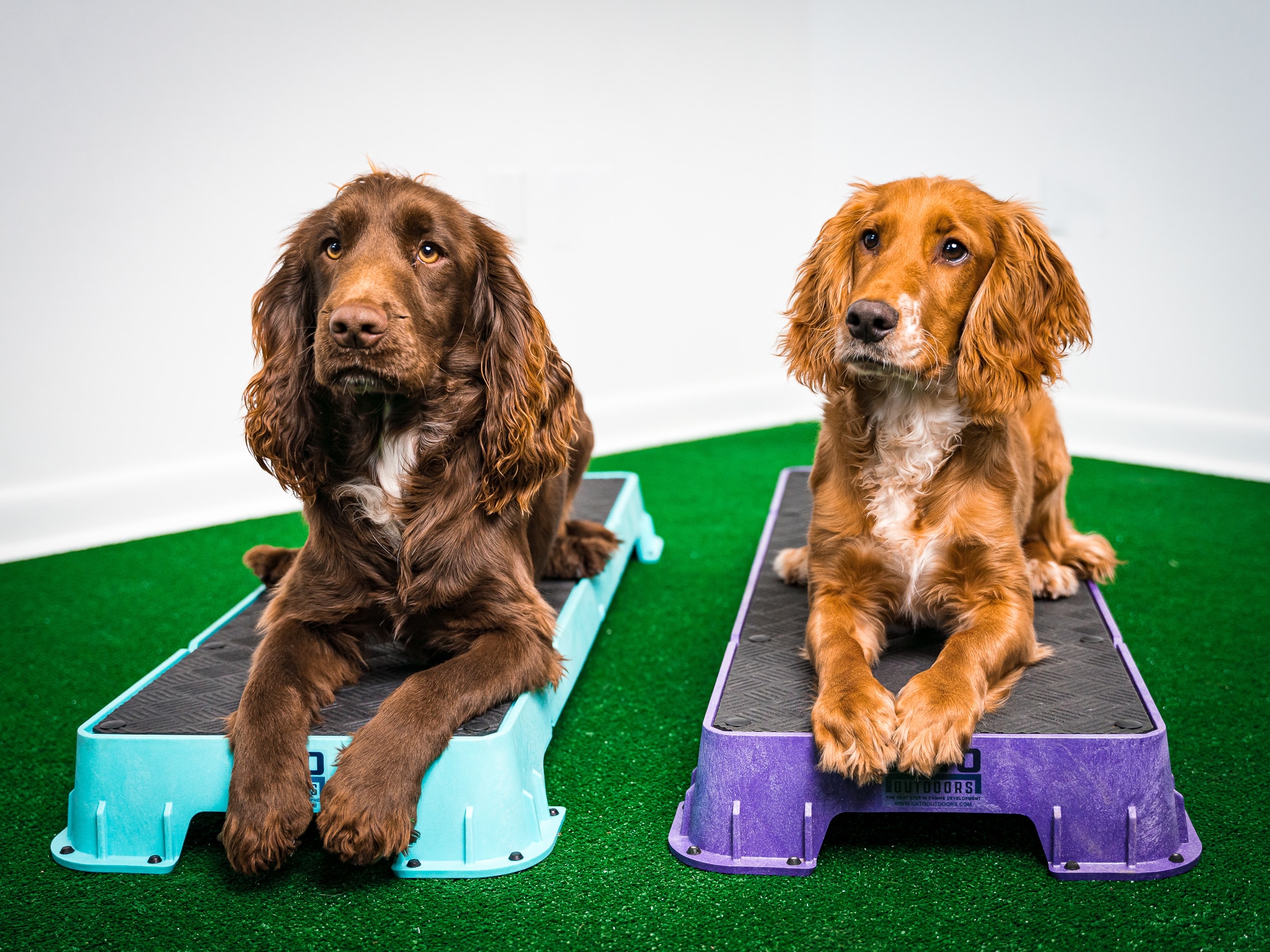Is it your New Year’s resolution to start working on your dog’s physical fitness? Or maybe weather tends to put a halt to your long walks, thus causing your dog (and maybe you) to go stir crazy. Personal dog gyms are starting to become a trend, not only for performance dogs but for dogs whose owners are looking for a new way to keep them fit and active.
Working with a certified canine rehabilitation expert or conditioning coach can help you gain the appropriate foundation in terms of what dog-friendly gym equipment you’ll need, where to set up your gym and what exercises are appropriate for your dog’s size and health goals. “Make sure that you get specific instruction from a Certified Canine Strength and Conditioning Coach,” says Bobbie Lyons, CSCC, CCFT, KPA CTP, program director for the Certified Canine Strength and Conditioning Coach Program at North Carolina State Veterinary Medicine. “It is ideal to make sure that you are improving your dog’s physical condition and increasing strength in all the right places.”
Also check in with your vet before you start any new physical fitness routine with your dog.
Dog Gym Equipment
While it’s best to customize equipment for your dog based on her physical needs and goals, there are some staples that Bobbie recommends for home dog gyms:
1. Small balance disc
Balance disc like one you can get from FitPAWS, helps to stabilize your dog’s core to stay balanced. Much like how core work is vital to a human’s overall physical wellbeing, the same can be said for a dog. When inflating the disc, be aware of how much air you add — changing the level of air in the cushion encourages different muscles to engage.
2. Platform
Platforms like the Cato Board from Cato Outdoors or the Klimb from Blue-9 Pet Products not only gives you a place to train your dog and a “place” to find their controlled area, but it also helps with isolating foot movement (i.e., training your dog to lift a hind foot on and off the platform) and balance work. Read our article for more information about using platforms for dog fitness and training.
3. Wooden 2x4s
This equipment also gives you an opportunity to work on your dog’s feet awareness. This is an easy do-it-yourself piece of equipment. Make sure the boards are cut about 12 to 18 inches long and have a non-slip surface on the bottom, so they don’t slide under your dog. “We use them for front and rear feet to get proper position in a stand,” explains Bobbie. “If you position the boards close together so that each foot is on a board, it allows the dog to sit while keeping the joints aligned and you work to align the rear feet under the hips.”
4. Soft flooring
This will prevent slipping and injuries on tile or wood floors. Gym mats or an area rug or yoga mat are all acceptable options for keeping your dog safe.
Other items that Bobbie uses as staples in her dog gym include FitPaws Paw Pods and K9FitBones in a variety of sizes to accommodate a variety of dogs.
“Understanding correct posture and position for each exercise is key to targeting the correct muscles intended for the exercises,” says Bobbie.






